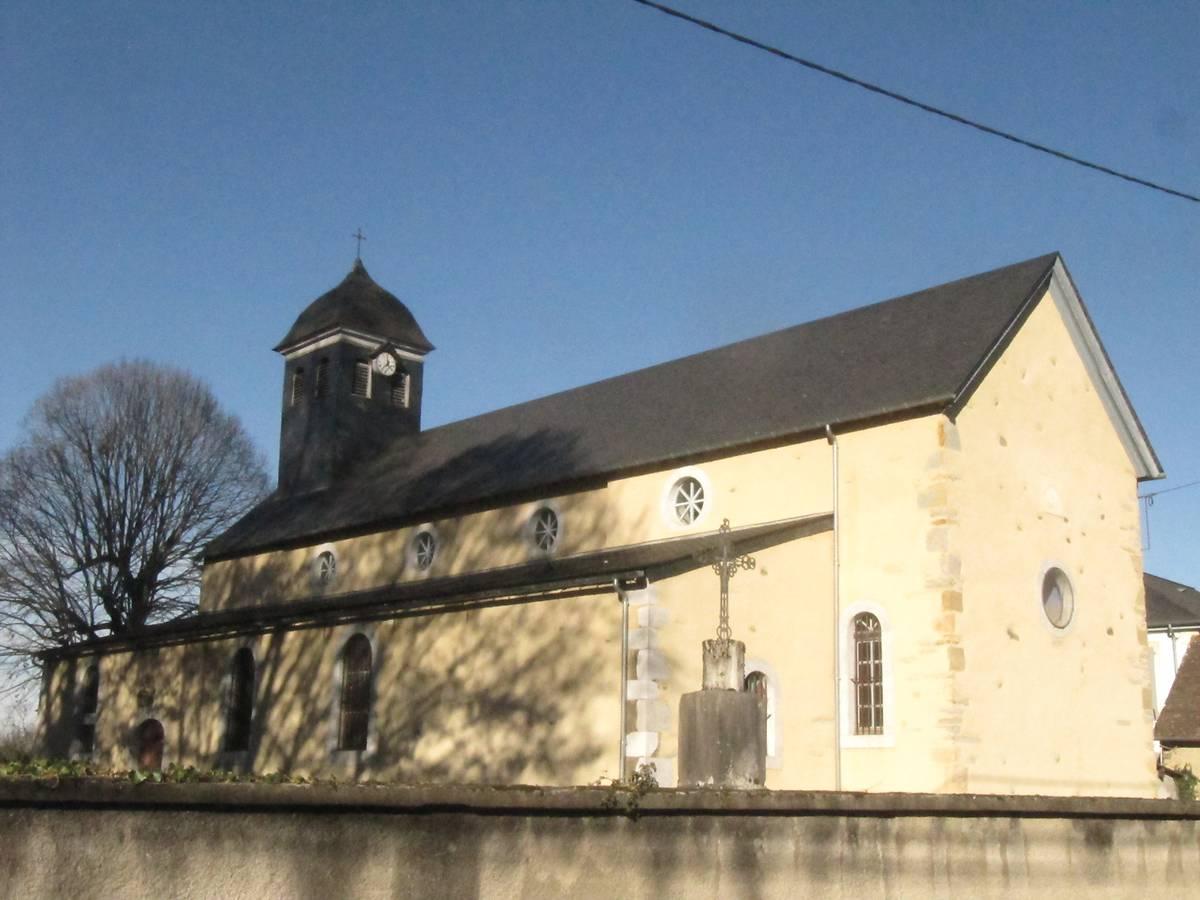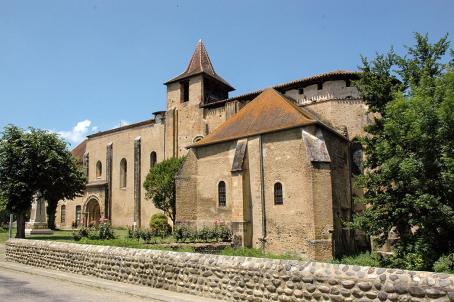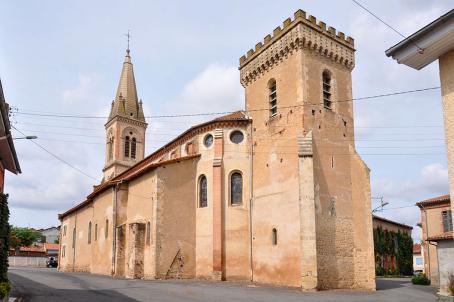Church of Saint-Julien de Lescar
The Saint-Julien church is located in Mouchès, in Midi-Pyrénées (Occitanie). This pre-Romanesque church, with originally built to a cruciform plan, is surrounded by high walls. Its single two span nave was vaulted with ogives in the 19th century, and has been entirely redecorated: paneling, woodwork, decor of false stones. Stained-glass windows enlighten the building. The font, dug in a beautiful white marble capital is especially notable, as well as the beautiful wooden altar-tomb, painted green to look like marble.
About this building
The Saint-Julien church is located in Mouchès, in Midi-Pyrénées (Occitanie) and could date from the 8th-9th centuries. The building is placed on the site of a very large Gallo-Roman villa whose remains have been found, and the site is also mentioned in 1105 as a Benedictine priory belonging to Saint-Orens d'Auch. It was later attached to a Cluniac monastery as an abbey, before being sold in the sixteenth century to help pay the ransom of Francis I, held by the Spanish after his capture on the battlefield during the defeat of Pavia ( 1525).
After being ravaged during the wars of religion, the building collapsed, before being remade in the nineteenth century. Originally a pre-Romanesque church, with a cruciform plan, it is surrounded by high walls. Its single two span nave was vaulted with ogives in the 19th century, and has been entirely redecorated: the paneling, woodwork, decoration of false stones on the walls and the vaults. Many stained glass windows give the building beauty, including one of which is dated 1817.
The building is dedicated to Saint Julien, first bishop of Lescar in the fifth century and Saint Radegonde, queen of the Franks in the sixth century. Their statues are featured on both sides of the altar. Also noteworthy is a font, dug in a beautiful white marble capitals, dated to late antiquity or the very early Middle Ages, as well as a beautiful wooden altar-tomb, that is painted green to imitate marble.





